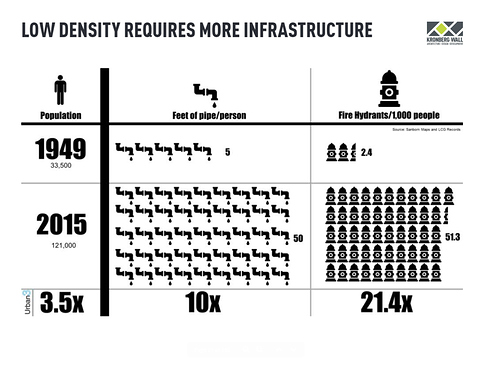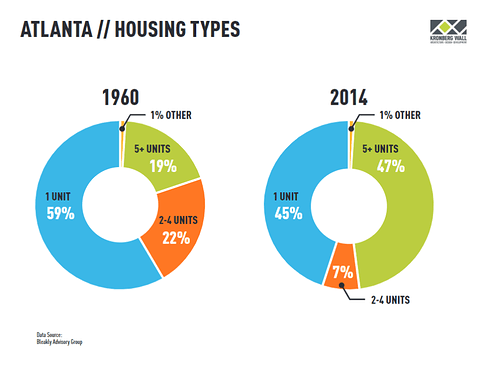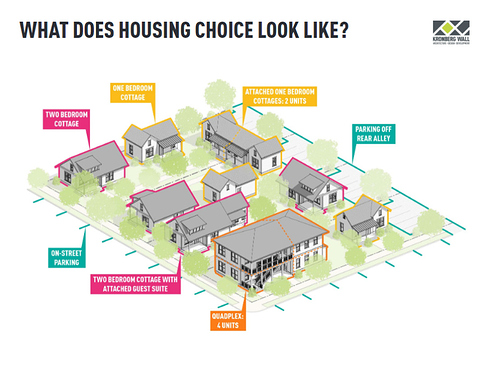We are caught in a conundrum. We want to see our downtown become more densely populated in support of both on-the-ground experiences, and resident/worker numbers that will support rail transit. We also want to protect our affordable housing. The problem is that a lot of our affordable housing (both private options and public options) is low density. If we are going to do both of our desires, there has to be some sort of public intervention or one of the two goals has to be sacrificed. Right now, the affordable housing side is losing.
Does affordable housing have to exist in the downtown core? I agree there should be affordable housing in the Raleigh Durham Chapel Hill metro area, but I don’t know if I am sold on it HAS to be downtown. I have really mixed feelings on reading this article and it doesn’t seem clear anyone has a solution to the housing cost problem happening all over North America. I like the idea of micro apts listed above, this is kind of how Tokyo adapted to the high costs. I also like the idea presented above of creating affordable housing on transit systems that can easily get downtown. I still think we need to increase supply, we just need to realize that this won’t affect the downtown core but will probably keep the suburbs from raising housing costs as fast if downtown can support more and more people. I also am a firm believer that density is usually better for the environment, almost all development downtown was already impervious surface… the takeaway from reading the article is that the more money people make the more housing costs go up, which is depressing to me and not really progressive… I don’t even see any a proposed anything out of this… it would be good to evaluate the cost of construction versus cost of land and figured out what is causing this to be so damn high. I think a lot of cost is hidden in the construction versus just the land price. Anyways… just thinking out loud and typing from phone here…
I think affordable housing needs to exist in the downtown core, in proximity to the downtown core, or there needs to be fast, affordable transit to bring people to the downtown core. A wide range of income earners work downtown and are required in order to have a functional core. There are another set of costs that come with commuting from an outer region to work in the core, one of which is transportation and commute time. Having some affordable housing in the core also promotes a diverse community and gives people more options.
I don’t think Section 8 is meeting the needs of Raleigh and I think there’s a stigma with it. I know in CAC meetings whenever an affordable housing project comes up the first question is if it’s going to be Section 8. I think Raleigh should be more progressive in dealing with it and put a mechanism in place to generate more funds specifically for public housing, and let our City set the rules for how those funds are spent.
Agreed! Walkability and robust access to transit is also a much bigger issue to the working poor who work in and around the city center.
Good response to the articles on this by the researcher who everyone is referencing. https://thefrisc.com/housing-arguments-over-sb-50-distort-my-upzoning-study-heres-how-to-get-zoning-changes-right-40daf85b74dc
I agree. Every $50 million dollar building in downtown has janitors. Every restaurant has wait staff and kitchen help. These folks are making $10-$15 an hour and there is no way they can afford to live close to where they work. The solution is to either ask taxpayers to pay for them, with subsidizing, or to ask developers to eat the losses renting units significantly below market rate. Seriously, someone making $10 an hour working at the downtown Mcdonalds, or Subway, or a dishwasher at Stella’s, these folks can only afford $400-$600 a month. I guess we could always try to figure out how to decrease land value in downtown Raleigh, that’ll drive the market rate way down and developers will stop building such expensive buildings.
Supply and demand would seem set in stone that land values will only increase as the city grows if the demand for urban living continues. Raleigh doesn’t have miles and miles of derelict development to renew like many other cities. It doesn’t have vast former manufacturing properties to convert. Other than the Cargill site, it hardly has any post industrial opportunities.
Pulling downtown southward with the Kane/Malik project and any sister effort on the north end of downtown up Capital Boulevard seem to be Raleigh’s best hope of expanding its core and creating more urban districts.
I think as more development comes online you could see different price points and a range of products. Right now it seems like we’re still at the front end of downtown development. Everything is new, and alot of it is built for the higher end since that’s where the biggest profit margins are. As apartments age their relative rent rates should be lower than the newest, most improved models with more amenities. There’s still so much pent up demand that everything is still premium.
I’d like to see affordable units mixed in with some of those core developments rather clustered at the Sir Walter, or the DHIC apartments at St Augustine.
Affordable units don’t have to all be located in the 1 sq mile core to be in proximity to Downtown. They could be anywhere along the BRT routes. I’d just prefer a better spread for affordable housing rather than have affordable buildings or complexes.
Recently saw this fantastic presentation with great illustrations of how housing choice influences affordability; wanted to share as food for thought. It focuses on “missing middle” housing in Atlanta and the history and challenges of zoning law. Some preview slides below:
Can you not rent duplexes in Atlanta (or maybe Portland, where it looks like the data originates from)?
This is referencing areas that are zoned single-family, which is 60% of Atlanta today. It also makes the interesting point that modifying zoning laws within Atlanta’s walkable neighborhoods would be re-legalizing housing choice, because pre-suburb zoning ordinances allowed houses, duplexes, and ADUs in 100% of the city. See pages 55-69.



